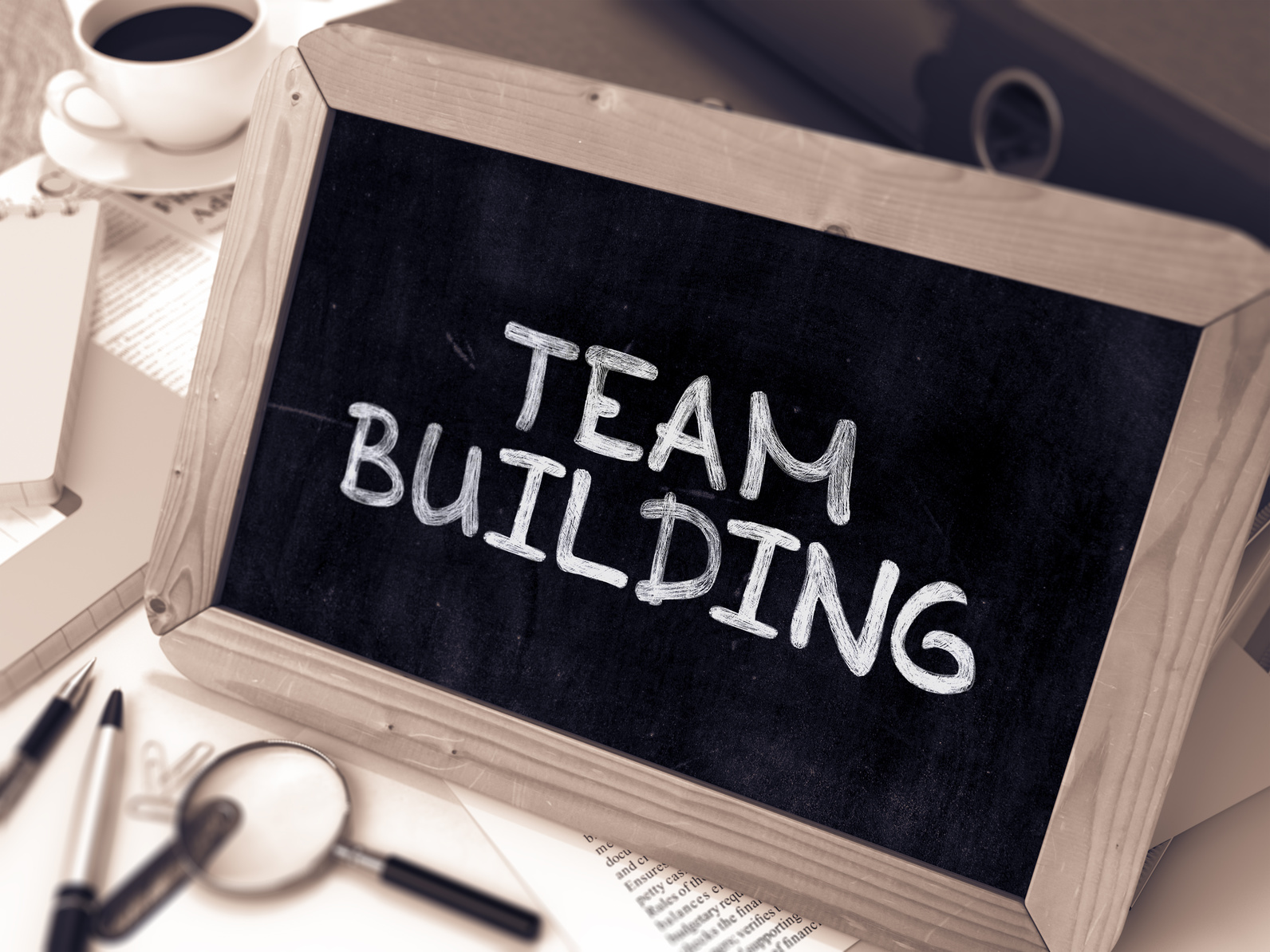“Proven Tactics to Motivate Your Team: Techniques for Enhancing Employee Engagement and Productivity:
As a manager or team leader, understanding the team building techniques to effectively motivate employees is crucial.
Motivated employees tend to be more engaged, productive, and enthusiastic, leading to improved performance and increased profitability.
This section delves into various proven employee motivation tactics, encompassing factors like the work environment, job satisfaction, goal setting, and feedback.
We’ll explore strategies that have shown success in transforming workplaces and boosting productivity.
Join us as we examine the most effective motivational strategies for employees, tailored to enhance your organization’s dynamics.”

Transform Your Workplace: Proven Tactics to Motivate Your Team
Key Takeaways:
- Effective employee motivation techniques can enhance productivity and drive success.
- Various factors influence employee motivation, including work environment, job satisfaction, feedback, and goal setting.
- Through implementing proven tactics, you can transform your workplace and inspire your team.
- Key employee motivation strategies include promoting a positive work environment, offering professional development opportunities, and providing meaningful incentives and rewards.
- Remember that sustaining motivation is an ongoing process that requires continuous improvement and adaptation to changing circumstances.
Understanding Employee Motivation
Before you can effectively motivate your employees, it is crucial to understand the concept of employee motivation.
Knowing what drives motivation can help you implement effective techniques and strategies to inspire and engage your workforce.
There are several factors that influence employee motivation, including:
- The desire for growth and development opportunities
- The need for recognition and appreciation
- The drive to make a meaningful contribution
- The desire for work-life balance
To inspire and motivate your employees, it’s essential to create an environment that meets these needs. One effective way to do this is by providing growth and development opportunities.
Employees who have access to training and mentorship programs are more likely to feel invested in their roles and motivated to perform at their best.
Additionally, providing regular feedback and recognition can help employees feel valued and appreciated, further boosting motivation levels.
Another way to inspire and engage your employees is by promoting work-life balance.
Providing flexible work arrangements, offering wellness programs, and implementing time management strategies can help employees feel less stressed and more motivated to perform their best.
In short, understanding what drives employee motivation is key to implementing effective techniques and strategies that will inspire and engage your workforce.
By prioritizing growth and development, providing regular feedback and recognition, and promoting work-life balance, you can create a work environment that fosters motivation and enhances productivity.
1. Setting Clear Goals and Expectations
If you want to motivate your employees, it’s crucial to set clear goals and expectations.
This way, your employees will have a clear understanding of what they need to accomplish, which can help increase their motivation and engagement.
One effective method for setting goals is to use the S.M.A.R.T. criteria as noted below:
| Criteria | Description |
|---|---|
| Specific | The goal should be well-defined and focused. |
| Measurable | The goal should be quantifiable, so progress can be tracked and measured. |
| Achievable | The goal should be realistic and attainable. |
| Relevant | The goal should be aligned with the organization’s objectives and the employee’s role. |
| Time-Bound | The goal should have a specific deadline or timeline. |
Once you’ve established S.M.A.R.T. goals, it’s important to communicate them effectively to your employees.
This can be done through regular check-ins and feedback sessions.
By providing constructive feedback and acknowledging progress, you can inspire your employees to achieve their goals and increase their motivation.
Another technique for increasing employee motivation is to involve them in the goal-setting process.
This can help them feel more invested in their work and increase their sense of autonomy.
By encouraging your employees to set their own goals and providing support and resources to help them achieve these goals, you can foster a more motivated and engaged workforce.

“Setting clear goals and expectations is a powerful motivator. By using the S.M.A.R.T. criteria and involving your employees in the process, you can help increase their sense of purpose and motivation at work.”
2. Providing Regular Feedback and Recognition
Regular feedback and recognition can significantly improve employee motivation and engagement.
When employees receive constructive feedback, they have a clear understanding of their performance and can make necessary improvements.
Additionally, recognition programs can boost morale and encourage employees to continue performing at a high level.
There are several employee engagement strategies you can use to provide effective feedback and recognition:
- Be specific: When providing feedback, be specific about the behavior or performance you are addressing. This helps employees understand exactly what they are doing well and what needs improvement.
- Give feedback in a timely manner: Feedback should be given as soon as possible, so employees can make changes right away.
- Focus on the positive: When providing feedback, try to focus on what the employee is doing well. This encourages them to continue performing at a high level.
- Implement recognition programs: Recognition programs can be a powerful motivator. Consider implementing a program that rewards employees for their hard work and dedication.
Here is an example of a simple recognition program:
| Recognition Program | Description |
|---|---|
| Employee of the Month | Each month, one employee is recognized for their exceptional performance. They receive a certificate, a small gift, and their photo is displayed in the break room for the month. |
By providing regular feedback and implementing recognition programs, you can create a culture that fosters employee motivation and engagement.

3. Promoting a Positive Work Environment
Creating a positive work environment is one of the most effective techniques for increasing employee motivation and engagement.
When employees feel valued and supported, they are more likely to be happy and productive at work.
One way to promote a positive work environment is by fostering a culture of teamwork. Encouraging collaboration and open communication between team members can improve morale and enhance productivity.
You can also consider implementing team-building activities or events to strengthen relationships among coworkers.
Another way to promote a positive work environment is by recognizing and celebrating employee achievements.
When employees feel appreciated for their hard work and contributions to the company, it can boost their motivation and satisfaction.
Consider implementing a recognition program or sharing success stories in team meetings or company-wide newsletters.
Providing opportunities for professional development and growth can also contribute to a positive work environment.
When employees feel that they have room to learn and advance in their careers, they are more likely to be invested in their work and motivated to perform at their best.
| Benefits of a Positive Work Environment | Techniques for Promoting a Positive Work Environment |
|---|---|
|
|
By promoting a positive work environment, you can create a workplace culture that values and supports your employees.
This can lead to increased motivation, engagement, and productivity, ultimately enhancing the success of your company.
Got Team Building Games?
![]()
Book a live game show experience today!
Contact us for further details.
For Immediate assistance by text – 917-670-4689
No deposit required. 5-Star Google Rated
We plan and facilitate all activities.

4. Offering Professional Development Opportunities
To motivate your employees, you must provide opportunities for professional development.
This will demonstrate that you value their growth and support their career aspirations. As an employer, offering professional development opportunities can drive employee engagement and provide added benefits to your business.
There are many ways to provide professional development opportunities to your employees.
Consider implementing mentoring programs, offering training seminars or courses, providing job shadowing opportunities, or offering tuition assistance.
These opportunities will allow your employees to skill up and become more productive members of your team.
Mentoring Programs
Mentoring programs can be highly effective for employee development. They offer a structured way for employees to learn from more experienced colleagues.
Mentors can provide guidance, support, and advice, helping mentees to develop new skills and succeed in their careers.
Mentoring programs can be formal or informal. Formal programs usually involve a structured curriculum, while informal ones allow employees to choose their own mentors based on their interests and goals.
Regardless of the format, mentoring programs offer a valuable opportunity for employees to learn from the best in their field.
Training Seminars and Courses
Training seminars and courses can be a valuable way to develop new skills or enhance existing ones.
There are many online and in-person courses available on a range of topics, from technology to leadership.
By investing in training for your employees, you are investing in the growth of your business as well.
When selecting courses or seminars, consider the needs of your employees and your organization.
Look for courses that will help your employees develop the skills they need to be more productive and valuable to your company.
You may want to start by offering courses related to your industry, and expand to more general topics as your employees progress.
Job Shadowing Opportunities
Job shadowing opportunities allow employees to experience different aspects of their organization.
By shadowing colleagues in other departments, employees can gain a broader perspective of the business and develop new skills.
Job shadowing can also help employees identify areas for growth and potential career paths.
To offer job shadowing opportunities, employees can spend a day or a week working alongside colleagues in another department.
This will allow them to learn new skills and gain practical experience in a different area of the business. Job shadowing can also help build collaboration and teamwork skills.
Tuition Assistance
Offering tuition assistance is another valuable way to support employee development. By helping employees pay for college courses or degree programs, you can demonstrate your commitment to their growth and development.
Tuition assistance can also help attract and retain top talent.
When offering tuition assistance, make sure to set clear expectations and guidelines for employees.
This will ensure that the program is fair and equitable. Consider offering assistance for both undergraduate and graduate programs, and ensure that the courses are relevant to the employee’s job and the needs of your organization.
“Offering professional development opportunities can motivate employees and provide added benefits to your business.”
5. Providing Meaningful Incentives and Rewards
Employee incentive programs are a great way to motivate your workforce and recognize their hard work. By providing meaningful rewards, you can boost morale and increase productivity.
Here are some motivational tools for employees that can make a difference:
| Incentive Type | Description |
|---|---|
| Monetary Rewards | Offer bonuses, raises or profit-sharing opportunities. |
| Recognition | Publicly acknowledge employees for their achievements and contributions, such as through employee of the month programs, shout-outs during meetings, or thank-you notes. |
| Non-Monetary Benefits | Provide additional benefits, such as flexible work arrangements, extra vacation days, or access to training and development opportunities. |
When selecting incentives and rewards, it’s important to consider what motivates your employees specifically.
A one-size-fits-all approach may not be effective. Survey your employees to find out what motivates them and tailor your incentive program accordingly.
Additionally, ensure that your incentive program is fair, transparent, and achievable.

Remember, incentives and rewards should not be seen as a substitute for a positive work environment, regular feedback, or other motivational techniques.
Instead, they should be used in combination with these tactics to create a comprehensive approach to employee motivation.
6. Cultivating Effective Leadership
As a leader, your role in motivating employees cannot be overstated. By employing effective leadership techniques, you can inspire and empower your workforce to achieve their full potential.
One key technique is to lead by example. As the leader, your actions set the tone for the rest of the team. If you demonstrate a strong work ethic, a positive attitude, and a commitment to continuous learning, your employees are more likely to follow suit.
Another important aspect of effective leadership is communication. You should strive to create an open and transparent environment where employees feel comfortable sharing feedback and ideas.
This can help build trust and foster collaboration, which in turn can lead to increased motivation and engagement.
Empowerment is also a critical element of effective leadership. You should delegate responsibilities to employees and provide them with the tools and resources they need to succeed.
This can help them feel valued and invested in the success of the organization, which can lead to increased motivation and productivity.
Finally, it’s important to recognize and reward your employees for their achievements. This can be done through verbal praise, bonuses, promotions, or other incentives.
By showing your appreciation for their hard work, you can boost morale and motivate employees to continue performing at a high level.

“A true leader has the confidence to stand alone, the courage to make tough decisions, and the compassion to listen to the needs of others.” – Douglas MacArthur
7. Encouraging Open Communication
Effective communication is vital for ensuring your employees feel heard, valued, and motivated. By fostering transparent communication channels, you can encourage feedback and suggestions, resolve conflicts, and build trust among team members.
Here are some employee engagement strategies and techniques for increasing employee motivation through open communication:
- Hold regular one-on-one meetings with employees to discuss their progress, goals, and concerns. This shows your employees that you care about their professional growth and are invested in their success.
- Encourage your employees to share their ideas and suggestions for improving the workplace. By implementing their ideas, you demonstrate that you value their input and are open to constructive feedback.
- Ensure that your employees have access to all the information they need to perform their jobs effectively.
This includes providing regular updates on company news and initiatives, as well as keeping them informed about any changes or challenges that may impact their work.
By creating an environment of open communication, you can boost employee engagement and motivation, foster innovation, and build a stronger, more collaborative team.
8. Encouraging Work-Life Balance
Offering your employees a healthy work-life balance is crucial when it comes to motivating them.
In fact, a better balance between work and personal life is one of the most sought-after benefits among employees, indicating that it has a significant influence on boosting morale and job satisfaction.
By introducing flexible working arrangements, such as telecommuting, job sharing, and flex-time, you can provide your team with the opportunity to balance their personal lives with work responsibilities.
This leads to increased productivity and job satisfaction. According to recent studies, employees who have access to flexible working arrangements report higher job satisfaction, improved mental health, and reduced stress levels.
Wellness programs are also an effective way to support your employees’ work-life balance. By promoting exercise, healthy eating habits, and relaxation techniques, you can help your workforce manage stress and maintain a healthy work-life balance.
From yoga classes and meditation sessions to gym memberships and healthy eating programs, investing in employee wellness programs can have a significant impact on your employees’ motivation and engagement.
Time Management Strategies
Helping your employees manage their time effectively is an important aspect of promoting work-life balance.
Encourage them to prioritize their tasks based on importance and urgency, delegate responsibilities, and set realistic deadlines.
By doing so, your employees can avoid burnout, reduce stress levels, and maintain a healthy balance between their personal and professional lives.
Employee Engagement Strategies
Employee engagement strategies can also help promote work-life balance.
By encouraging open communication, recognizing your employees’ achievements, and providing opportunities for learning and development, you can help your team feel valued and motivated.
Empowering employees to take ownership of their work can also help them feel more in control of their workload, leading to a better work-life balance.
“Balancing work and family responsibilities is not easy. However, having a supportive employer and flexible work arrangements can make a world of difference.”
– Rachel, Marketing Manager
9. Building Trust and Empowering Employees
Trust and empowerment are essential for motivating your employees.
As a leader, it’s your responsibility to build a supportive environment that allows individuals to take ownership of their work. By doing so, you’ll inspire your employees to perform at their best and help them achieve their full potential.
Empowering your employees involves delegating responsibilities and giving them the autonomy to make decisions.
This approach not only motivates your workforce but also frees up your time to focus on other priorities.
“Trust is the glue that holds people together and the lubricant that keeps things moving ahead. Without trust, relationships deteriorate and organizations break down.”
– Louis V. Gerstner, Jr.
- To build trust and empower your employees,
- set clear expectations and goals,
- provide the necessary resources and support,
- create a culture of open communication and transparency,
- delegate tasks and responsibilities effectively, and
- recognize and reward successes.
By doing so, you’ll demonstrate faith in your employees and show that you value their contributions.
This approach will foster a positive and motivating work environment, which will translate into higher productivity and better results for your organization.
10. Sustaining Motivation in the Long Run
Other proven tactics to motivate your team is a process that requires consistent effort. It’s not enough to implement tactics and strategies once and expect them to work indefinitely.
To sustain motivation in the long run, you must be willing to adapt and evolve as circumstances change.
Continuous Improvement
One of the key strategies for sustaining motivation is to focus on continuous improvement. This means regularly assessing your tactics and strategies, and making adjustments as needed.
Pay attention to your employees’ feedback and make changes accordingly. Remember that what works for one employee or team may not work for another.
By continuously improving your motivational strategies, you can keep your employees engaged and motivated in the long term.
Celebrating Successes
Celebrating successes is also an important part of sustaining motivation. Recognize and reward employees who meet or exceed their goals, and acknowledge their contributions to the team.
Celebrating successes not only motivates employees, but also creates a positive culture of achievement and recognition.
Adapting to Changing Circumstances
Finally, it’s important to be flexible and adapt to changing circumstances. This could mean adjusting your motivational strategies to account for changes in the market, shifts in employee needs and priorities, or a change in company culture.
By remaining adaptable and open to change, you can sustain motivation and keep your employees engaged over the long term.
Conclusion
Some employee motivation techniques include:
- Setting clear goals and expectations
- Providing regular feedback and recognition
- Promoting a positive work environment
- Offering professional development opportunities
- Providing meaningful incentives and rewards
- Cultivating effective leadership
- Encouraging open communication
- Encouraging work-life balance
- Building trust and empowering employees
- Sustaining motivation in the long run.
Sustaining motivation in the long run requires a commitment to continuous improvement, celebrating successes, and adapting to changing circumstances.
By implementing these strategies, you can keep your employees engaged and motivated for years to come.









